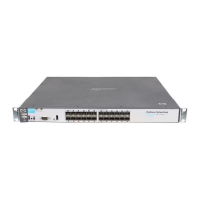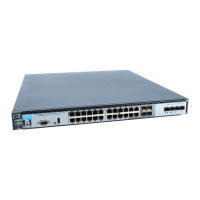13-63
Configuring for Network Management Applications
LLDP (Link-Layer Discovery Protocol)
Configuring Location Data for LLDP-MED Devices
You can configure a switch port to advertise location data for the switch itself,
the physical wall-jack location of the endpoint (recommended), or the
location of a DHCP server supporting the switch and/or endpoint. You also
have the option of configuring these different address types:
■ civic address: physical address data such as city, street number, and
building information
■ ELIN (Emergency Location Identification Number): an emergency
number typically assigned to MLTS (Multiline Telephone System Opera-
tors) in North America
■ coordinate-based location: attitude, longitude, and altitude informa-
tion (Requires configuration via an SNMP application.)
network-policy
This TLV enables the switch port to advertise its
configured network policies (voice VLAN, Layer 2 QoS,
Layer 3 QoS), and allows LLDP-MED endpoint devices to
auto-configure the voice network policy advertised by the
switch. This also enables the use of SNMP applications to
troubleshoot statically configured endpoint network
policy mismatches.
(Default: Enabled)
Notes: Network policy is only advertised for ports that are
configured as members of the voice VLAN. If the port
belongs to more than one voice VLAN, then the voice
VLAN with the lowest-numbered VID is selected as the
VLAN for voice traffic. Also, this TLV cannot be enabled
unless the capability TLV is already enabled.
For more information, refer to “Network Policy
Advertisements” on page 13-61
location_id
This TLV enables the switch port to advertise its
configured location data (if any). For more on
configuring location data, refer to “Configuring Location
Data for LLDP-MED Devices”.
(Default: Enabled)
Note: When disabled, this TLV cannot be enabled unless
the capability TLV is already enabled.
